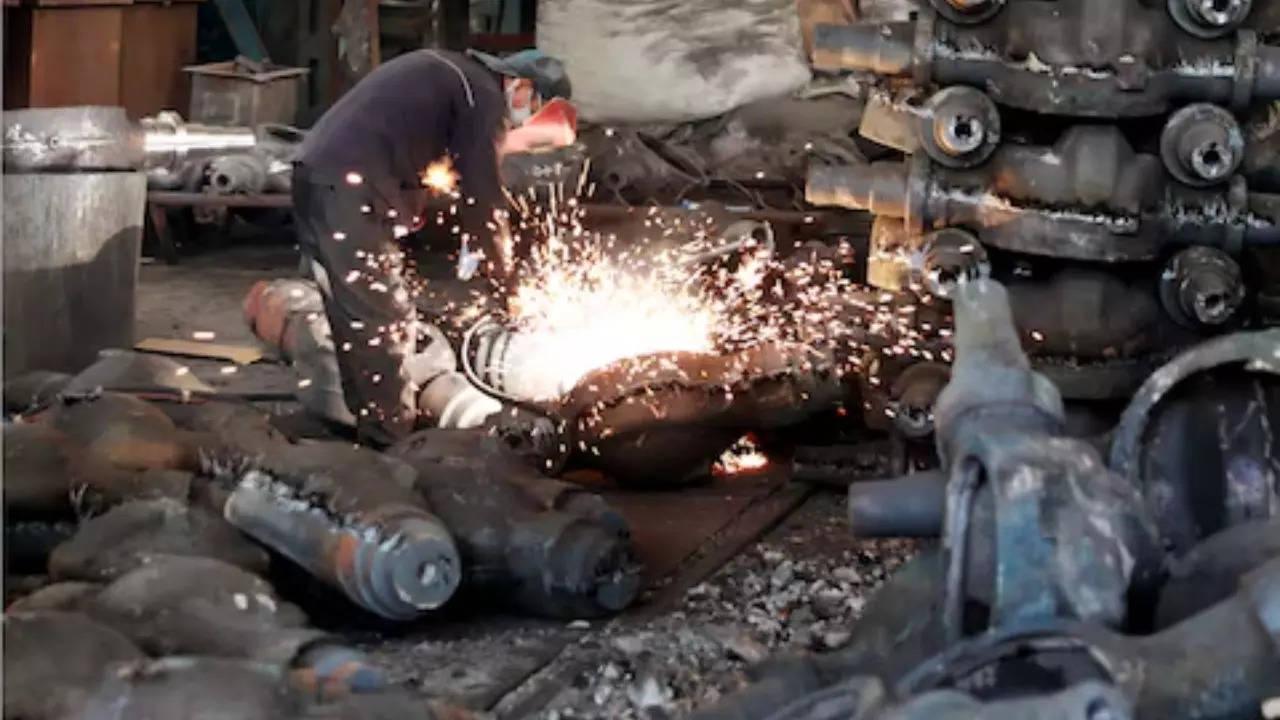[ad_1]
BEIJING: China’s manufacturing contracted for a second month in June, an official factory survey showed on Sunday, keeping alive calls for further stimulus after a string of recent indicators showed the economy struggling to get back on its feet.
The official purchasing managers’ index (PMI), at 49.5 in June, was unchanged in May, below the 50-mark separating growth from contraction and in line with a median forecast of 49.5 in a Reuters poll.
The PMI, a sentiment-based indicator, tends to paint a gloomier picture of the world’s second-biggest economy than hard data. However, disappointing May industrial output numbers suggest factory owners have some reasons to be worried.
While China’s exports exceeded forecasts in May, experts say the jury is still out on whether export sales are sustainable given growing trade tensions between Beijing and Western economies. Meanwhile, a protracted property crisis continues to drag on domestic demand.
As consumers remained wary and the May holiday boost faded, the non-manufacturing PMI, which includes services and construction, fell to 50.5 from 51.1 in May, the lowest since December.
Analysts expect China to roll out more policy support measures in the short term, while a government pledge to boost fiscal stimulus is seen helping kick domestic consumption into a higher gear.
But high local-government debt and deflationary pressures cast a long shadow over recovery prospects, despite a slew of measures officials have rolled out since last October, tempering investors’ and factory owners’ expectations.
Private sector investment grew 0.1% in January to May, down from 0.3% in the first four months alone, while the property investment slump worsened.
China’s central bank last month announced a relending programme for affordable housing to accelerate sales of unsold housing stock so supply better matches demand.
Officials are under pressure to fire up new growth engines to reduce the economy’s reliance on property.
Premier Li Qiang told a World Economic Forum meeting on Tuesday that growth of new industries was supporting healthy economic development.
“Since the beginning of this year, China’s economy has maintained an upward trend… and is expected to continue to improve steadily over the second quarter,” Li said.
The official purchasing managers’ index (PMI), at 49.5 in June, was unchanged in May, below the 50-mark separating growth from contraction and in line with a median forecast of 49.5 in a Reuters poll.
The PMI, a sentiment-based indicator, tends to paint a gloomier picture of the world’s second-biggest economy than hard data. However, disappointing May industrial output numbers suggest factory owners have some reasons to be worried.
While China’s exports exceeded forecasts in May, experts say the jury is still out on whether export sales are sustainable given growing trade tensions between Beijing and Western economies. Meanwhile, a protracted property crisis continues to drag on domestic demand.
As consumers remained wary and the May holiday boost faded, the non-manufacturing PMI, which includes services and construction, fell to 50.5 from 51.1 in May, the lowest since December.
Analysts expect China to roll out more policy support measures in the short term, while a government pledge to boost fiscal stimulus is seen helping kick domestic consumption into a higher gear.
But high local-government debt and deflationary pressures cast a long shadow over recovery prospects, despite a slew of measures officials have rolled out since last October, tempering investors’ and factory owners’ expectations.
Private sector investment grew 0.1% in January to May, down from 0.3% in the first four months alone, while the property investment slump worsened.
China’s central bank last month announced a relending programme for affordable housing to accelerate sales of unsold housing stock so supply better matches demand.
Officials are under pressure to fire up new growth engines to reduce the economy’s reliance on property.
Premier Li Qiang told a World Economic Forum meeting on Tuesday that growth of new industries was supporting healthy economic development.
“Since the beginning of this year, China’s economy has maintained an upward trend… and is expected to continue to improve steadily over the second quarter,” Li said.
[ad_2]
Source link








